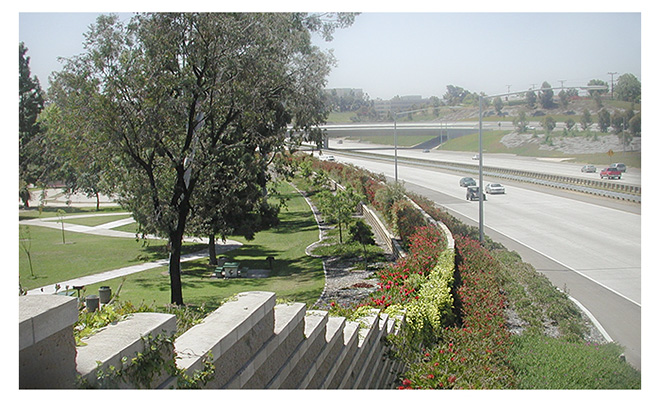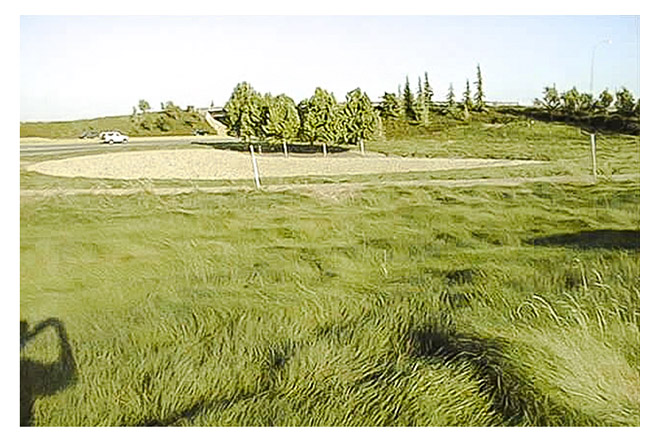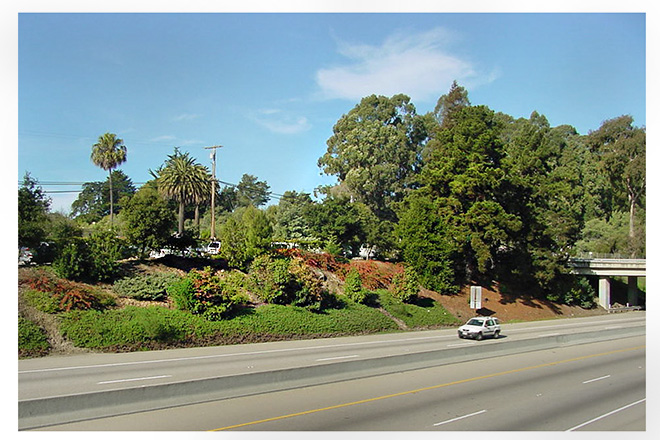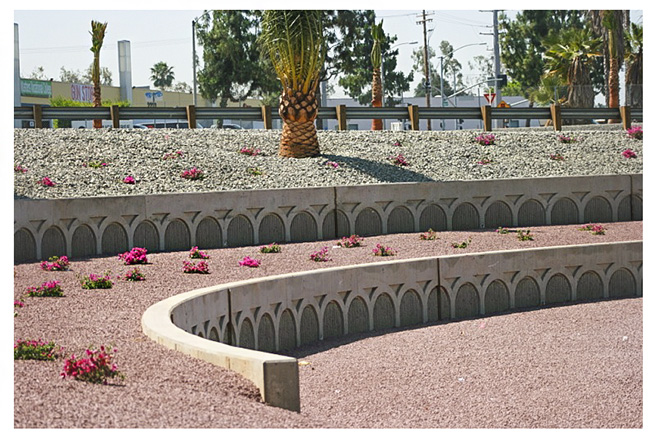Highway Planting
This brochure identifies trees as a low cost investment that improves ecological health, economic prosperity and community quality of life.

Photo of Planting Design Guidance: Good planting design provides functional and aesthetic benefits, require little supplemental potable water, and requires minimal resources to maintain.
Purpose of Highway Planting
Highway planting is used by Landscape Architects to provide aesthetic, safety, environmental mitigation, stormwater pollution prevention, and erosion control benefits. Aesthetically, planting helps integrate the highway within its natural or built environment to provide human scale and maintain an area’s unique visual context. Functionally, highway planting provides safety benefits such as headlight glare reduction and windbreaks, and can also reduce the maintenance required to control graffiti.
Cost Effective Design
Highway planting must be cost effective. Landscape architects design roadsides that have low life-cycle costs and endure for the long-term. Small container-sized trees, for example, are typically specified instead of larger, more expensive boxed trees. Not only are smaller container-sized trees less expensive, easier to plant, require less water and fertilizer, and better able to tolerate harsh highway conditions than larger container-sized trees, just a few years after planting, these smaller container-sized trees typically reach a larger size.
Landscape architects also achieve cost effectiveness by maximizing the use of locally available, off-the-shelf, commercial quality materials, well matched to project site conditions.
Highway Scale Design

Photo of Highway Scale Planting: Simple planting design is considered good design in the highway environment as demonstrated on Route 5 in Elk Grove, CA.
The highway environment is often dominated by large areas of pavement, massive structures, retaining walls and noise barriers. Landscape architects develop simple planting design concepts that use large scale, massed plantings to reduce the visual prominence of these elements, provide human scale, and reduce driver distraction.
Simple, large scale planting designs are most appropriate for highway roadsides. A motorist traveling along a highway corridor at high speeds will typically view the adjacent landscape for a only short time, so large scale, uncomplicated plant masses that are less distracting than intricate small scale designs provide a highway environment safest for all users.
Small scale planting design is also discouraged because this approach requires additional attention by maintenance, leading to increased maintenance worker exposure to traffic. Finally, small scale landscape designs should also be avoided because they often can not be maintained at levels that satisfy the traveling public, nearby homeowners, or other stakeholders.
Maintainable Design

Photo of Maintainable Design: A mixture of drought tolerant native and non-native plants on Route 101 near San Luis Obispo controls erosion, integrates the highway within the surrounding community, and requires minimal maintenance.
Highway planting must be buildable, durable, maintainable, consider life cycle costs, and respect limited maintenance resources. By soliciting input from maintenance staff early in the design process, landscape architects come to an understanding of maintenance intensive site conditions. By incorporating the following ideas in their planting designs, landscape architects can minimize or eliminate recurring maintenance activities:
- Regionally appropriate, drought tolerant or native plant material.
- Low maintenance plant material.
- Plants selected and placed to avoid the need for pruning.
- Irrigation systems that are durable and easy to operate.
- "Smart" irrigation controllers that adjust watering schedules automatically based upon weather conditions.
- Mulch applications that discourage weed growth, reduce herbicide spraying, and conserve soil moisture.
- Plant establishment periods that provide Maintenance with established landscapes.
- Pave narrow, high risk areas.
- "SAFER" design approaches that reduce maintenance worker exposure to traffic.
Water Efficient Design

Photo of Water Efficient Design: An inert ground cover of colored gravel mulch, combined with drought tolerant plants and texture retaining walls reflects the aesthetics of the surrounding community , conserves precious potable water resources, and requires minimal maintenance.
As a steward of California’s precious water resources, Caltrans actively manages, promotes and implements water conservation practices within the highway transportation system and associated facilities. Cost effective and appropriate water conservation strategies are employed in the design, construction, operation and maintenance of transportation facilities including water conserving plants and irrigation systems for highway planting, and to the maximum extent practicable, the use of recycled water.
For information on how to design planting and irrigation systems that comply with Caltrans water conservation requirements, please visit our Water Conservation web page.
Updated: April 11, 2018


